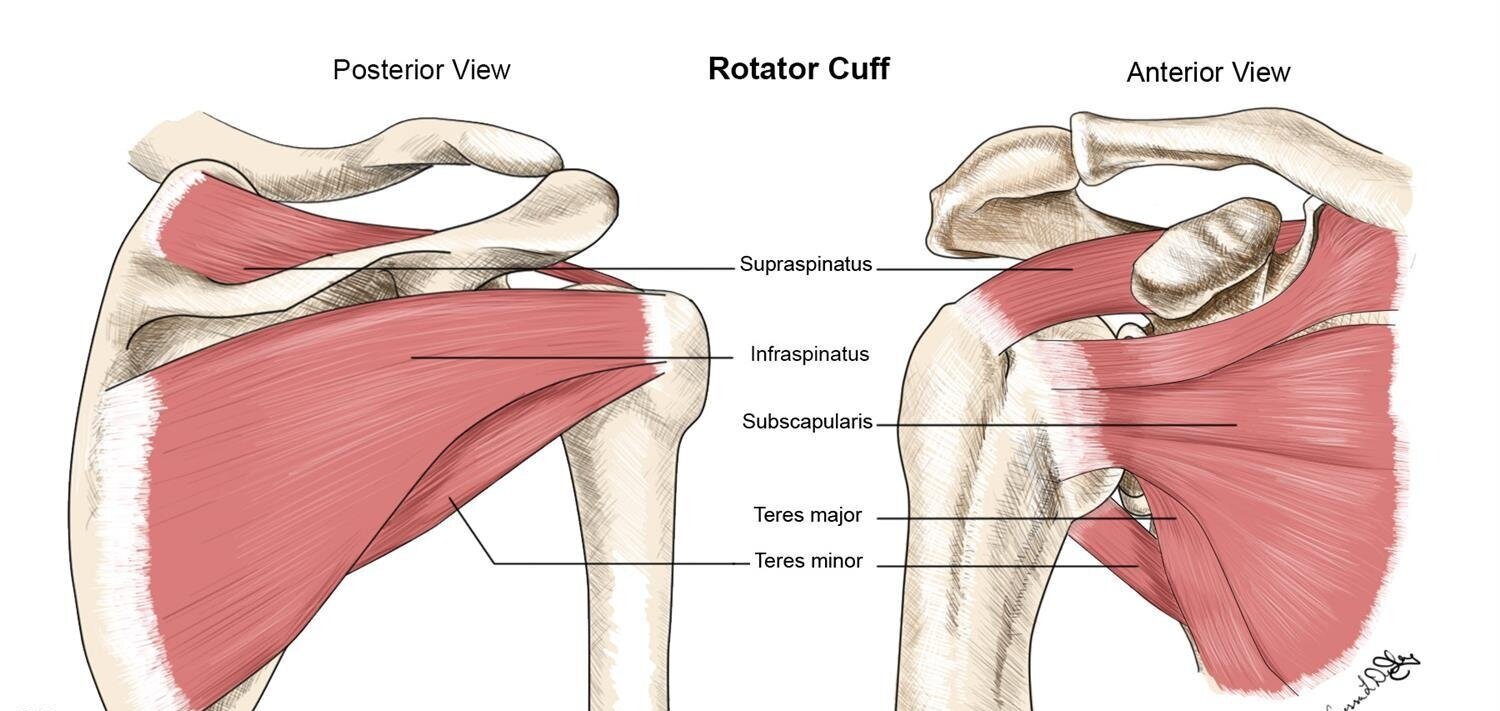What is the Rotator Cuff?
Most of us have heard of something called the rotator cuff? Is it a cuff? Does it rotate? Well, this blog will allow you to better understand what exactly the rotator cuff is, and why it exists.
The rotator cuff is a group of 4 relatively small muscles in the shoulder. These muscles are called the “SITS” muscles. The supraspinatus, infraspinatus, teres minor, and subscapularis. Independently, these muscles have different roles. However, they also work as a team with a common goal. Let’s first look at these structures one by one.
Supraspinatus: The supraspinatus muscle is located in the supraspinous fossa of the scapula and inserts into the greater tubercle of the humerus. In my clinical experience, the supraspinatus is the most frequently injured rotator cuff muscle. Its role is to raise the arm over head.
Infraspinatus: The infraspinatus is located at the infraspinous fossa of the scapula and inserts onto the greater tubercle of the humerus. Its role is to externally rotate the shoulder joint. When the infraspinatus is tight, taut or injured, it frequently causes generalized shoulder pain.
Teres minor: Teres minor is located just below infraspinatus and inserts onto the greater tubercle of the humerus. This muscle works with infraspinatus to externally rotate the shoulder.
Subscapularis: The subscapularis muscle is the odd one out. Subscapularis sits on the front surface of the scapula and inserts on the lesser tubercle of the humerus. Its role is to internally rotate the shoulder joint.
As a whole, the SITS muscles have two major jobs:
Maintaining proper dynamic and static shoulder position. When the rotator cuff muscles are strong, they prevent the humerus bone from overly depressing or elevating, hence preventing subluxation and/or impingement.
Allowing for smooth motion of the shoulder joint. As Daniel Le states, the rotator cuff muscles work together like the “suspension for your car.” With healthier “suspension,” the shoulder joint will be able to move fluidly during sports, daily living, etc with out putting extra strain on surrounding joints and tissues.
Have a great day, and remember to live, laugh and love.
Written by Kenneth Kells III

